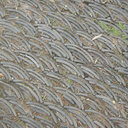Reduning injection (RDN), a patented traditional Chinese medicine, has the obvious antipyretic effect and has been widely used in China. Although some previous studies proved its antipyretic effect by animal efficacy experiment or clinical observation, its holistic mechanism in vivo was still unclear.To comprehensively elucidate the antipyretic mechanism of RDN, the investigation of fever-related potential biomarkers and metabolic pathways in the rat fever model is described in this paper.
MATERIALS AND METHODS
Rat fever model was established by dry yeast. A large number of endogenous metabolites in serum and urine were detected by UPLC-Q-TOF/MS, and fever-related potential biomarkers were screened and identified by multivariate analysis and metabolite databases. The reliability and biological significance of the largely disturbed biomarkers was verified by the metabolic network and the correlation with pharmacodynamic indicators, which contained IL-1β, IL-6, TNF-α, PGE
2 and cAMP.
The established UPLC-Q-TOF/MS analytical method afforded satisfactory results in terms of precision, repeatability and stability, which met the requirements of biological sample determination. A total of 32 potential biomarkers associated with fever were screened and identified, among which 22 species could be adjusted by RDN. The metabolism pathway analysis revealed that valine, leucine and isoleucine biosynthesis, and sphingolipid metabolism were greatly disturbed. Their biomarkers involved L-leucine, L-valine, sphinganine and phytosphingosine, all of which showed a callback trend after RDN was given. These 4 biomarkers had a certain correlation with some known fever-related small molecules and pharmacodynamic indicators, which indicated that the selected fever-related biomarkers had certain reliability and biological significance.RDN has a good regulation of the metabolic disorder of endogenous components in dry yeast-induced fever rats. Its antipyretic mechanism may be the regulation of amino acid metabolism, lipid metabolism and energy metabolism. The study is useful to better understand and analyze the pharmacodynamic mechanism of complex systems, such as traditional Chinese medicine.


